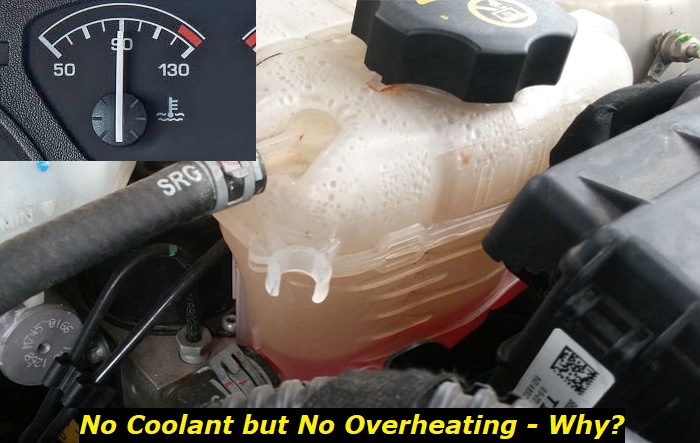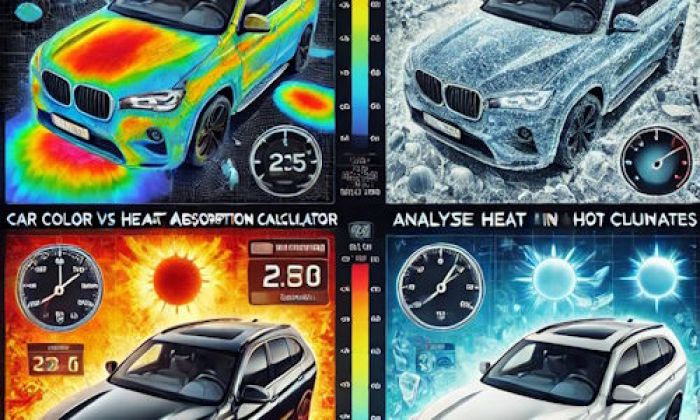You expect your car to overheat when the engine coolant runs out. The situation is puzzling when the coolant tank is empty, but the car is not overheating. Your guess is right. Something is wrong. You need to solve the antifreeze puzzle fast before the engine overheats.
Coolant level problems highlights
- Level of urgency:high
- Commonreasons:cooling system problems, leaks, coolant expands, circulation issues
- DIY diagnostics:quite complicated
- DIY repair:impossible
- Price of repair:$300 - $850
- Time for repair:3 - 9 hours
- If ignored:engine overheating and failure, cooling equipment problems

What Is Antifreeze and What Does It Do?
Antifreeze, also called engine coolant, is an orange or green liquid used to regulate the engine temperature. The liquid is mixed with water in equal quantities. Antifreeze maintains an even temperature in the engine compartment during extreme cold or hot temperatures outside.
The engine coolant is called antifreeze because it prevents freezing in winter. In hot weather, the liquid protects the engine from overheating. Antifreeze also prevents corrosion and acts as a lubricant for engine components.
Why is the Coolant Low but the Car is Not Overheating?
Most drivers fear overheating problems. Hence, any signal of low coolant or antifreeze leaks when driving is a red flag. The situation is confusing when the engine coolant is low, but your car is not overheating. You may be tempted to keep going or assume everything is working well.
Overheating problems start earlier than you get a check engine light or signal from the temperature sensor. The engine not overheating does not mean that you should ignore the low coolant and keep driving. You need to fix the situation immediately.
Driving a car with leaking antifreeze is risky. The engine may overheat or freeze unexpectedly as the outside temperatures change. Overheating and freezing can damage engine components. In addition, low coolant will lead to accelerated corrosion.
You must solve the coolant problem in time to avoid high repair and replacement costs. The next section discusses the causes of coolant leaks that lead to no or low coolant in your car and their solutions.
What Causes Antifreeze Leaks?
Antifreeze leaks are linked to faulty cooling system components, including the radiator, coolant reservoir, head gasket, and water pump. You may also lose the engine coolant to external leaks, a leaking heater core, and a faulty thermostat. Identifying the broken part is the first piece of the antifreeze puzzle.
Let us discuss the potential causes further to determine the appropriate solutions.
1. A Damaged Radiator Cap
A perfect fit for a radiator cap is important to prevent coolant leaks to other engine parts. The radiator cap also controls the coolant pressure. It should close tightly to maintain the right pressure and open to allow excess pressure to escape.
A loose radiator cap will allow all pressure to escape, while a stuck radiator cap traps excess pressure. The coolant vaporizes faster than necessary if the internal pressure is too high. The coolant level will decrease, which may lead to overheating. The high pressure may also damage other parts, including the radiator and head gasket.
Coolant leaks on the ground indicate that the radiator cap is faulty. Other symptoms to look out for are low coolant, an overflowing expansion tank, leaking or collapsing hoses, and engine overheating. You may also see dripping stains on the radiator.
2. A Blown Head Gasket
A faulty head gasket causes coolant leaks, which lead to overheating. In addition, a blown head gasket may allow the coolant to flow and mix with the engine oil. The result is a loss of compression, making it impossible to drive your car.
Driving with a defective head gasket may also cause the cylinder head to warp, and the piston rings to malfunction. Coolant leaks from a blown head gasket are difficult to notice. A significant coolant loss and an overheating engine give clues. However, other defects cause similar symptoms, creating a need for further diagnosis.
A defective head gasket causes light blue or white smoke from the exhaust. You will also notice wetness from the cylinder head to the engine. If the coolant leaks into the oil because of the defect, the oil turns white or contains white traces.
Another sign of a broken head gasket is low or inconsistent power delivery. Check the head gasket if your car has no coolant and shows these symptoms. A head gasket is cheap. You will incur minimal replacement costs if other cooling system parts are functional.
3. External Leaks
External coolant leaks are sometimes obvious. You will notice a spot or pool of coolant under the car. The engine may also be wet. The hard part is to identify the leaking part. In addition, the coolant sometimes evaporates without leaving spots, making it hard to notice external leaks.
Another problem is that if the hoses or the expansion tank have holes or cracks, they may only leak when the engine is hot. The leaking coolant drips on the hot engine and evaporates immediately. You will only notice that the coolant level is decreasing fast.
You need a qualified mechanic or the right tools to test all the parts for external leaks. The testing kits are inexpensive, but you need instructions to use them and find the source of leaks. However, most coolant leaks start from the hoses, water pump, expansion tank, or thermostat.
4. Leaking Heater core
The heater core may be the last part you suspect to have a problem when the coolant runs out. It is located inside your car dashboard and is important in the cooling system. The heater core uses the hot engine coolant to heat the air and then pumps the hot air into the cabin.
If the heater core is cracked or leaking, the sweet smell of the antifreeze flows into the cabin. You may not see any coolant leaks, but the smell alerts you that the heater core is faulty. If the damage is severe, the engine coolant will leak into the car's footwell.
Other symptoms of a defective heater core are excessive fogging on the windows and the heater blowing cold air instead of hot. The heater core should blow hot air when the engine is running or hot. In addition, the coolant reservoir will be low or empty.
A broken heater core is expensive to repair and replace. The process, in most cases, involves removing the dashboard. However, you risk severe damage if you ignore the symptoms.
5. Additional Causes
Broken radiator hoses and holes in the radiator cause internal coolant losses. Other mechanical issues that may allow the antifreeze to leak include a faulty thermostat, cracks in the coolant reservoir, and a leaking water pump. Most of these issues are easy to detect with a simple visual inspection of the cooling system.
How to Fix Coolant Leaks
Fixing coolant leaks is easy after identifying the underlying cause. Some parts are easy to diagnose and repair, while others require professional help. For instance, you can see damage on the radiator cap without special tools. However, replacing the heater core requires car expertise.
It is advisable to engage an expert mechanic even after fixing the leaking problem to ensure all other parts work.
1. Install a New Radiator Cap
If you ascertain that your car has a faulty radiator cap, do not wait for further damages or overheating problems. Buy and install a new radiator cap. You can fix it with the owner's manual and ask a mechanic to install it. Refill the coolant and check for any leaks or coolant loss.
2. Test and Fix Coolant Leaks
As mentioned earlier, some leaks are not obvious because the fluid evaporates immediately. Hence, if the car has no coolant or the level keeps decreasing, first you need to test for leaks and fix them immediately. You can use a test kit with the right adapters for your car model to test the cooling system for leaks.
Working with a mechanic is easier and more efficient. A certified mechanic can easily identify all the faulty parts, including the radiator cap, hoses, head gasket, and heater core. The mechanic will buy and install new parts.
Some repairs are simple and inexpensive to do without a mechanic. For instance, you can fix a faulty or cracked radiator cap and solve the related coolant leaks. However, ask the mechanic to check your replacements during the normal car service, even if your home repairs solve the coolant problem.
3. Check the Coolant Level Regularly
The coolant tank has marks to show you the minimum and maximum levels. Check the tank regularly for noticeable losses, especially when you smell the antifreeze. It is safe to act immediately after the coolant starts reducing before overheating problems begin.
Conclusion
If you notice that your car has no coolant but is not overheating, do not assume it is safe to continue driving it. Your coolant is most likely leaking internally or externally, which will cause further damage and overheating problems. Do not ignore any antifreeze smell or obvious internal or external leaks.
Have your car checked at a mechanic shop if you cannot diagnose the problem at home. Your mechanic should trace the source of coolant leaks and replace any faulty parts. In addition, you need to be proactive in checking the coolant level and troubleshooting any symptoms of coolant leaks immediately.
About the authors
The CarAraC research team is composed of seasoned auto mechanics and automotive industry professionals, including individuals with advanced degrees and certifications in their field. Our team members boast prestigious credentials, reflecting their extensive knowledge and skills. These qualifications include: IMI: Institute of the Motor Industry, ASE-Certified Master Automobile Technicians; Coventry University, Graduate of MA in Automotive Journalism; Politecnico di Torino, Italy, MS Automotive Engineering; Ss. Cyril and Methodius University in Skopje, Mechanical University in Skopje; TOC Automotive College; DHA Suffa University, Department of Mechanical Engineering






Add comment